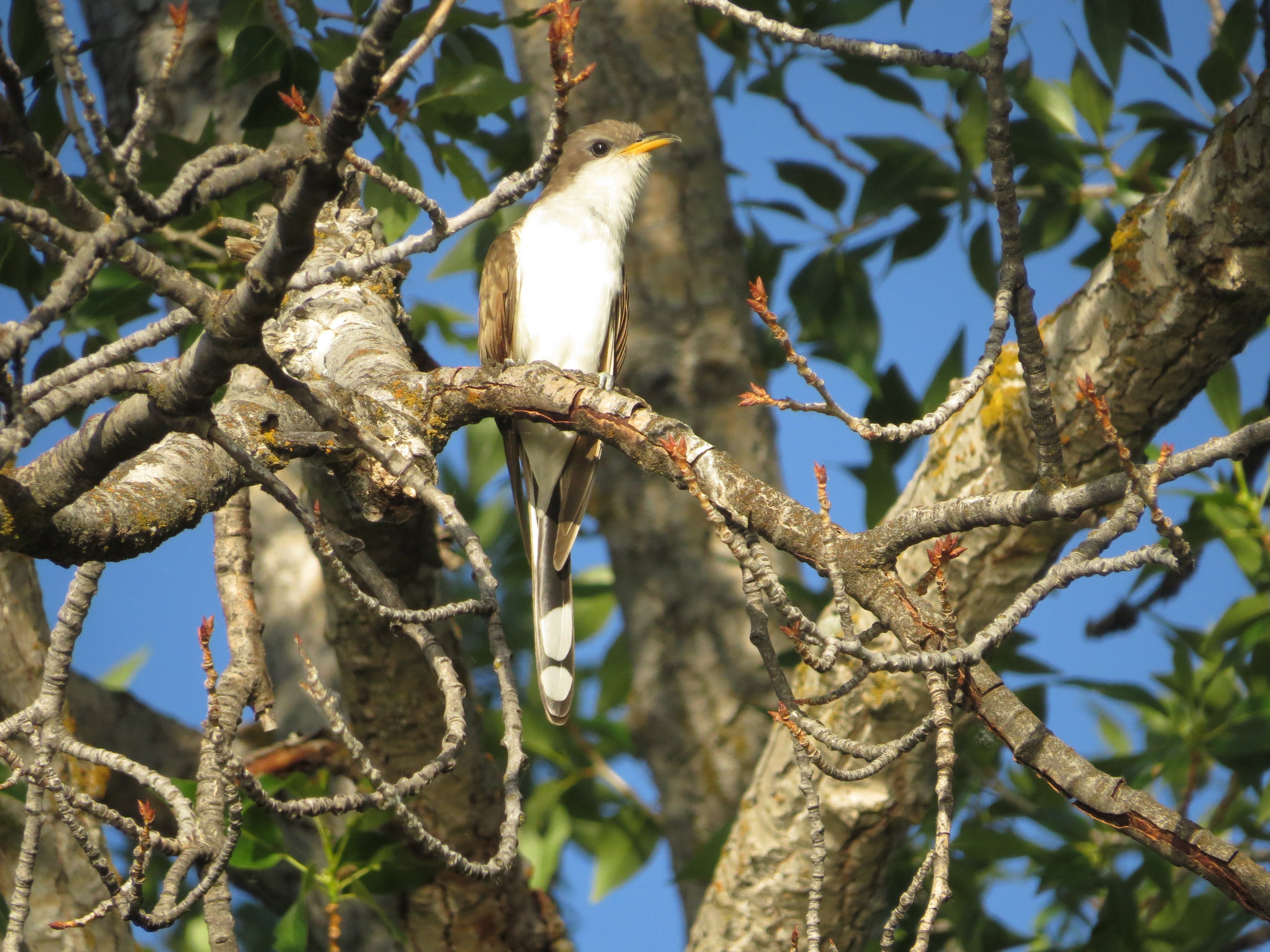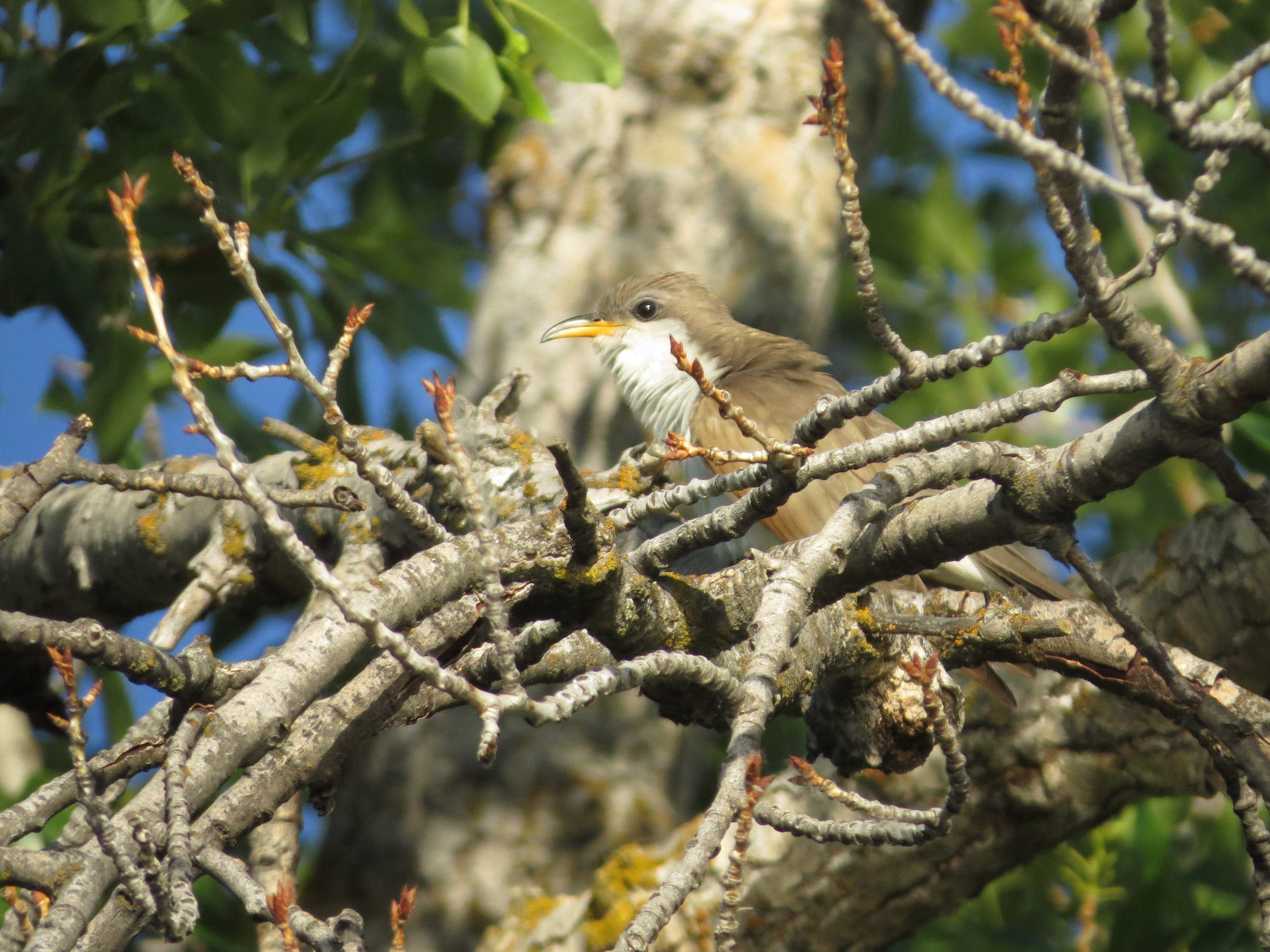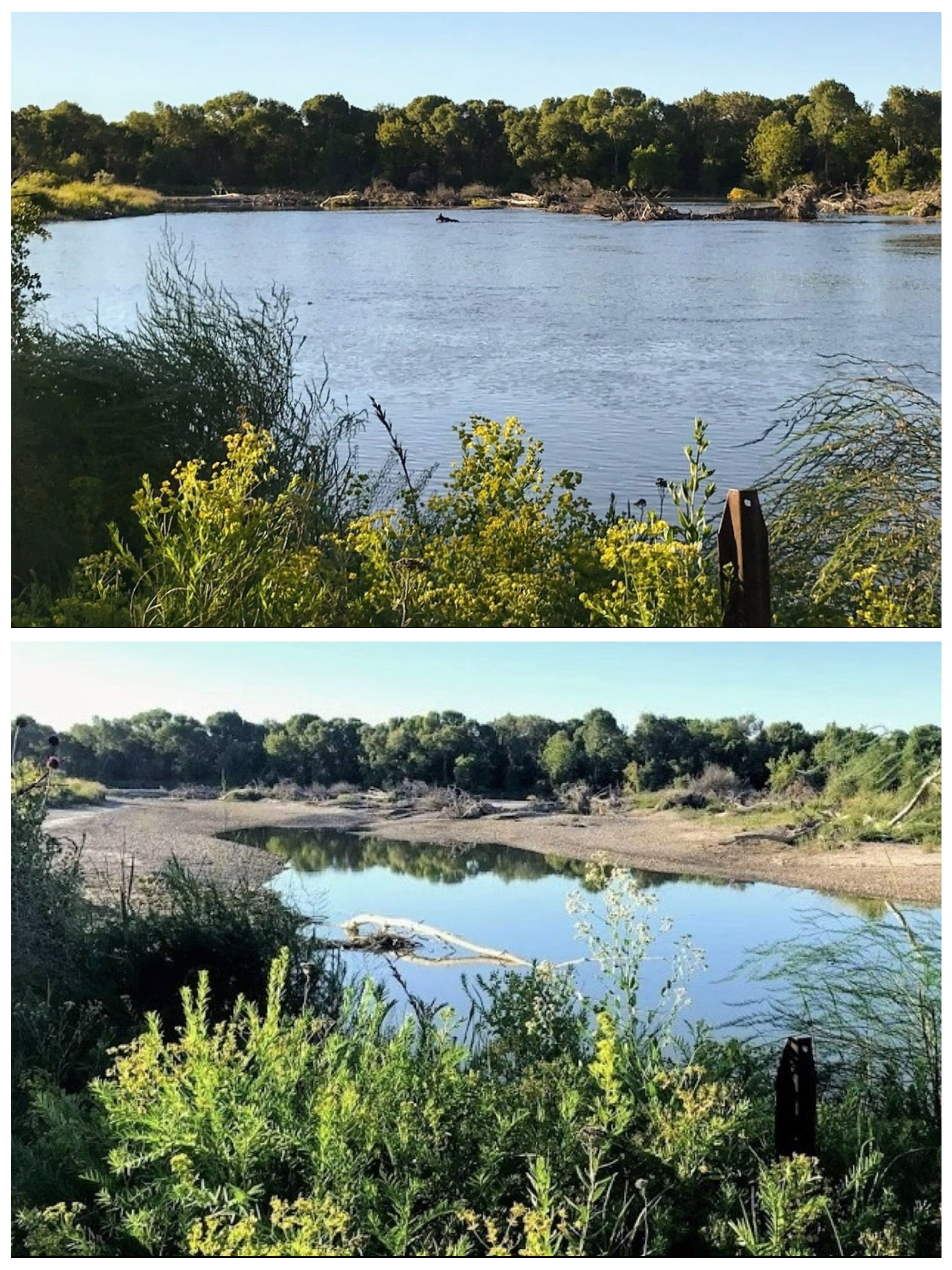By: Stephanie Coates
Watching from the willows, gleaning caterpillars from cottonwood leaves, and sometimes seemingly vanishing from their breeding grounds as soon as they arrive − what’s a researcher to think when the study species disappears? Yellow-billed Cuckoos are enigmatic, spontaneous, and maybe slightly devious, but with the right pieces of information, we’re on track to cracking some of their mysteries.

We had lofty season goals for 2020. We planned to continue monitoring cuckoos in southern Idaho, a feat that entails hundreds of point count surveys along the main stem of the Snake River, the Upper Snake, and Henry’s fork from mid-June to mid-August. Last year, our estimates put the entire population for the region at just over a dozen individual cuckoos. On top of monitoring, we ambitiously proposed and acquired appropriate permits for a nest searching component of the project. The idea was to find a cuckoo territory with breeding individuals, search for the notoriously well-hidden and flimsy nests of this rare species, wait until the nests were no longer active, and then passively collect molted feathers for stable isotope analysis, which would tell us more about where cuckoos breeding in Idaho spend the rest of the year.
Like all best-laid plans, these were foiled. Almost instantly.
Cuckoos arrived in southern Idaho, we detected them, and then they disappeared. We didn’t detect a single cuckoo after the first week of July. What happened? The first clue we have is related to the diet of cuckoos. There are no diet studies to refer to in Idaho, but we know cuckoos prefer large prey items, usually insects. In southern California one study found that almost half of the prey delivered to nests consisted of caterpillars (44.9%; mostly sphinx moth larvae). Tree frogs and katydids comprised almost equal proportions (23.8% and 21.8%, respectively), while grasshoppers (8.7%) and other insects (cicadas, dragonflies, butterflies, moths, beetles, and spiders; 1.3%) made up the rest of their diet. In southern British Columbia, Western Tent Caterpillars are thought to be a main prey item, and local cuckoo numbers are tied to Western Tent Caterpillar outbreaks.

The second clue we have is that a cold, stormy snap settled into the Snake River Plain during the last week of June. The system brought cold temperatures, windy weather, and a lot of rain, causing the rivers to swell with runoff. Flooding seeped into areas that are normally dry, inundating leaf litter and ground cover where many insects reside.
Cold temperatures may have delayed emergence and prompted insects to take shelter in less exposed locations.
Our final clue is that wherever long-term studies of cuckoos have occurred, researchers find extreme fluctuations in population size. On the Kern River in California, for example, an 11-year study (1985−1996) estimated a low of two pairs in 1990 followed by a high of 24 pairs just two years later. Other researchers have pointed to contrasting fluctuations in population size for neighboring regions; when cuckoos are scarce in one area, they pop up in unexpected abundance in a neighboring area. This suggests that cuckoos flexibly select and move to breeding areas based on some assessment of criteria important for breeding.

If we put all of this together, we have a portrait of a species that is not unlike many “irruptive” bird species. What we think happened this season was that upon arriving to their breeding area of recent past years and finding sparse insect prey, cuckoos simply moved on to “greener pastures”. This concept probably sounds familiar to the bird-savvy crowd when they think of winter finches (for example, Evening Grosbeaks), where a scarcity of seeds or nuts in one region causes an exodus in that area and an irruption of finches in a different region with copious food. We could be wrong − this could be an oscillation driven by some other cue. Only time and continued monitoring will tell. In the meantime, send us kooky thoughts of nests and molted feathers, and perhaps slightly less enigmatic cuckoos for next summer.
This article is part of our 2020 end of the year newsletter! View the full newsletter here, or click “older posts” to read the next article.
Make sure you don’t miss out! Sign up to get our annual email update.